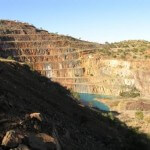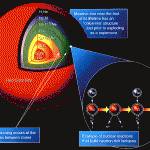Treasures: Natural nuclear reactors
I don’t know how other people are taught, but for a long time I thought that nuclear reactors generated energy through some borderline-mystical atomic process that I could never really comprehend. And that’s partly true. But if you skip the details of how fission actually works, its role in a power plant is actually pretty simple to understand: the reason we can use nuclear decay to generate power is that it releases heat. So it’s not really the mystical atoms as such that make nuclear power possible, but the comparatively mundane process of using heat to make steam to move turbines.
Read More »Treasures: Natural nuclear reactors
